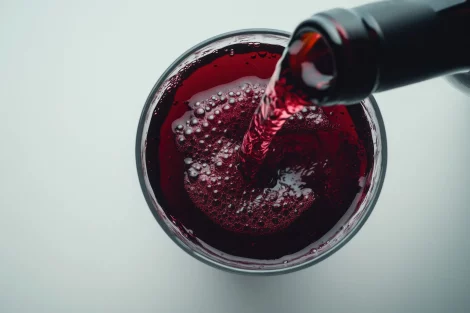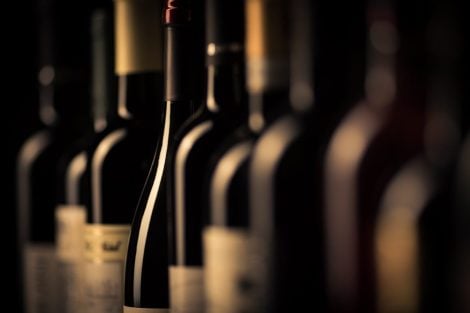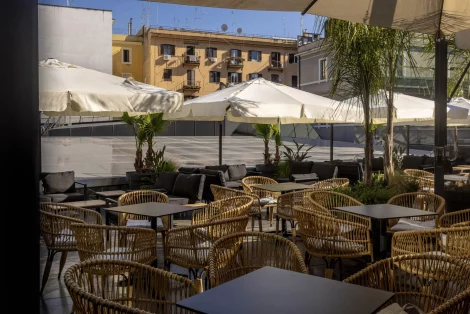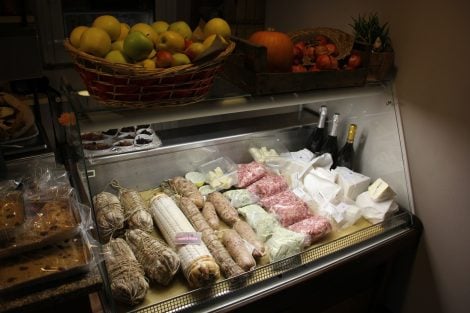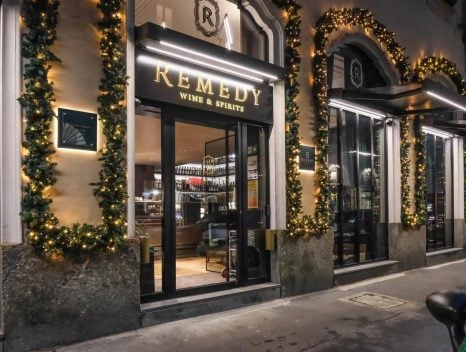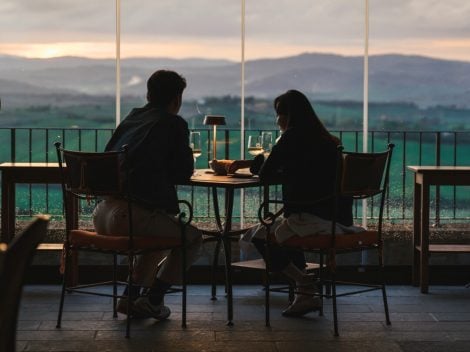The image of the mill in Italy is now inextricably linked to the Barilla family’s Mulino Bianco. It has been exactly fifty years since the launch of the country’s most famous brand of biscuits and snacks, and in the late 1980s a commercial by Giuseppe Tornatore gave the logo a physical appearance, finding a perfect match in the Mulino delle Pile in Chiusdino, in the province of Siena (which has long been up for sale). That image became familiar even to those who, perhaps, had never seen a real mill. And yet, Italy is full of them, even though there’s no proper national register.

Over 400 ancient watermills still exist
The Associazione Italiana Amici dei Mulini Storici – AIAMS – has done a great job of archiving, identifying just over four hundred watermills (a small fraction of those that were operational until the 1960s). Most of the mills surveyed by the organisation are still functioning: some have returned to traditional milling, others are sawmills, museums, or offer educational experiences. And then there are those who have transformed these buildings into hospitality venues with restaurants and hotels. “The mill wasn’t just an ingenious workshop,” explains AIAMS president Gabriele Setti, “it was also a meeting place, the agorà, where the miller was something like the village ‘philosopher’.”
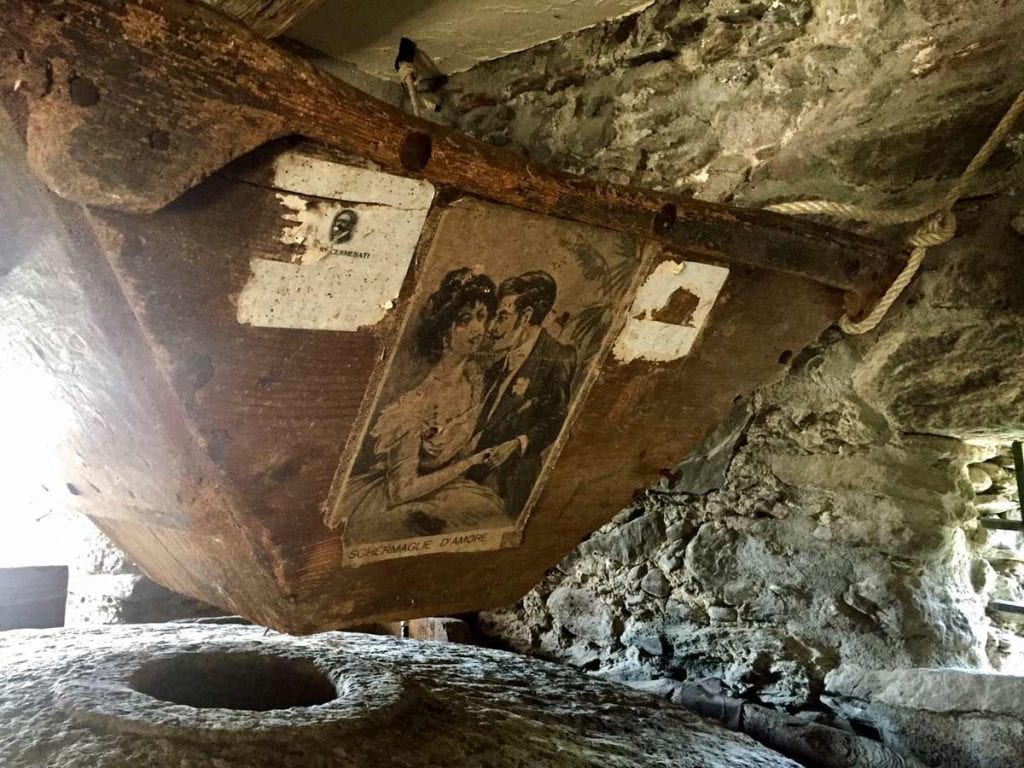
The social value of mills: places of gathering
Setti underlines the social value of the mill, but not with nostalgia. On the contrary, he is convinced that these realities can still offer great value today: “If an ancient building, even one a thousand years old,” he says, “continues to produce and welcome guests, it means it is a living and contemporary place, a site of knowledge deeply connected to its territory.” In this light, the mill ecosystem appears to be an important opportunity for “smart” tourism that values nature, silence, and slowness.
Eleven addresses for a holiday in a mill
Here is a list for a different kind of holiday: we’ve selected 11 historic mills, restored and embedded in their natural and cultural landscapes, offering a variety of experiences. You can eat and sleep here, but also watch how wheat is milled and taste products made with flour ground on site. Let us introduce them to you…
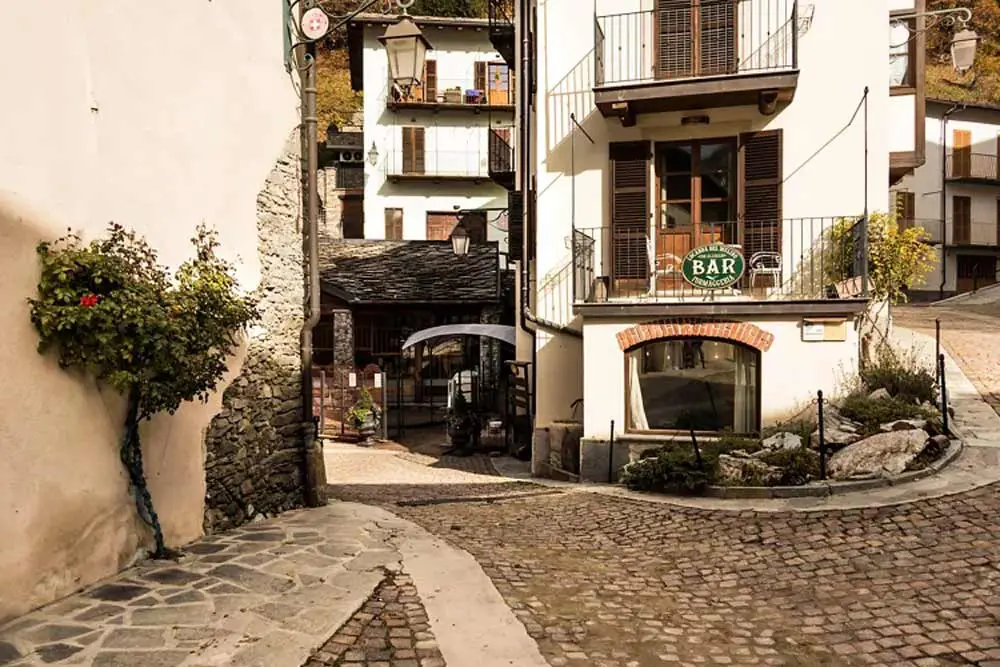
La Locanda del Mulino
Pamparato (CN)
Alessandra Ingenetti is the cook and innkeeper of La Locanda del Mulino in Valcasotto, a hamlet restored by the renowned cheese company Beppino Occelli in the Cuneo area. The mill, built in the 19th century, was moved from Pamparato to Valcasotto, now widely known as the “village of cheeses” (this is where Occelli matures his cheeses). The village square has become the starting point for many outdoor activities: hiking, cycling, snowshoeing in winter, visits to the Savoy castle in Valcasotto. Then it's back to town to enjoy Alessandra’s dishes: “Maize flour is the base of many dishes – she explains – from polenta to paste di meliga, to my invention: the Valcasotto cake, made with three flours stone-ground here: maize, buckwheat and spelt, filled with wild blueberry cream.” To soak in the ancient atmosphere of the stone-roofed houses, guests can stay in one of the inn’s eight rooms.
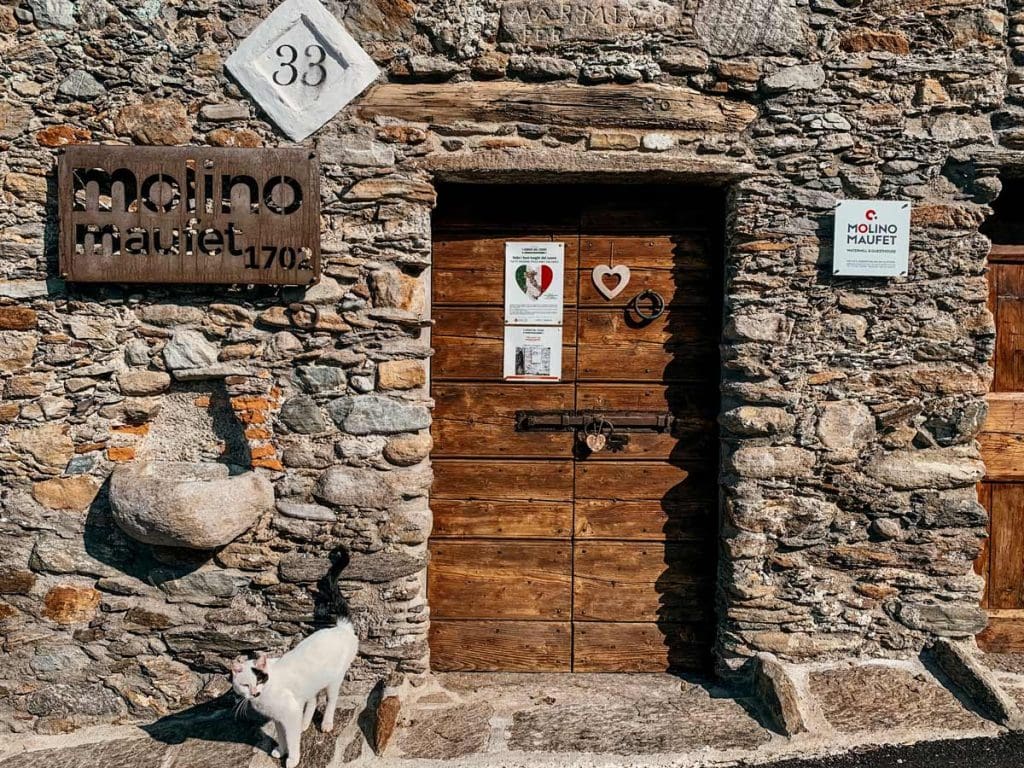
Molino Maufet
Colico (LC)
At Molino Maufet, you’ll also enjoy a lake view: the structure, dating back to the 13th century, was restored by a couple from Colico, in the province of Como, who were enchanted by the place: “We had bought land just a few metres away – explain Claudia and Lorenzo Bettiga – to build our home, and when we were offered the adjacent ruin, we discovered it was a mill. From that moment on, we immersed ourselves in the subject, reading books and visiting dozens of mills across Italy.” Their research led to the creation of a hospitality structure with six modern rooms within a well-preserved historical context. It’s a multifaceted sustainable tourism project that includes an eco-museum – a FAI listed site – a bread oven they intend to make available to the community, and a future micro-hydroelectric plant to harness the water’s power: “We’re on the Sentiero del Viandante – says Claudia – which was once lined with dozens of mills, now gradually coming back to life.” Colico is the largest lakeside area on Lake Como, known for water sports, but there’s much more to do here: excursions to Lake Mezzola, the cycle path to Bormio in Valtellina, and a tour of the mills of Villatico.
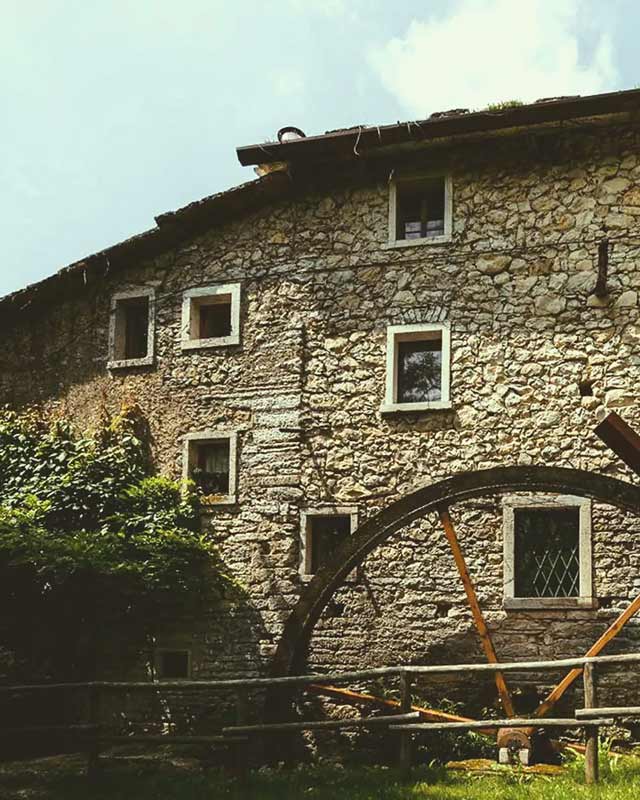
Mulino dei Veraghi
Fumane (VR)
Nestled between the Monti Lessini and Valpolicella, Agostino Sartori made a promise to the last miller of the Mulino dei Veraghi not to let the place fall into ruin. A wine producer with his company Terre di Molina, he has also become something of a miller in Molina di Fumane, in the province of Verona: “It would be wonderful to resume full milling activity – explains Sartori – but health regulations make it difficult, so I mill a bit of flour to make polenta and keep the grindstones turning. In 2018, I opened a B&B with five rooms and also invested in glamping, with two tents – one for couples, one for families – set in greenery by the Veraghi spring. We’re just steps from the Parco delle Cascate, which features more than fifteen spectacular waterfalls.”
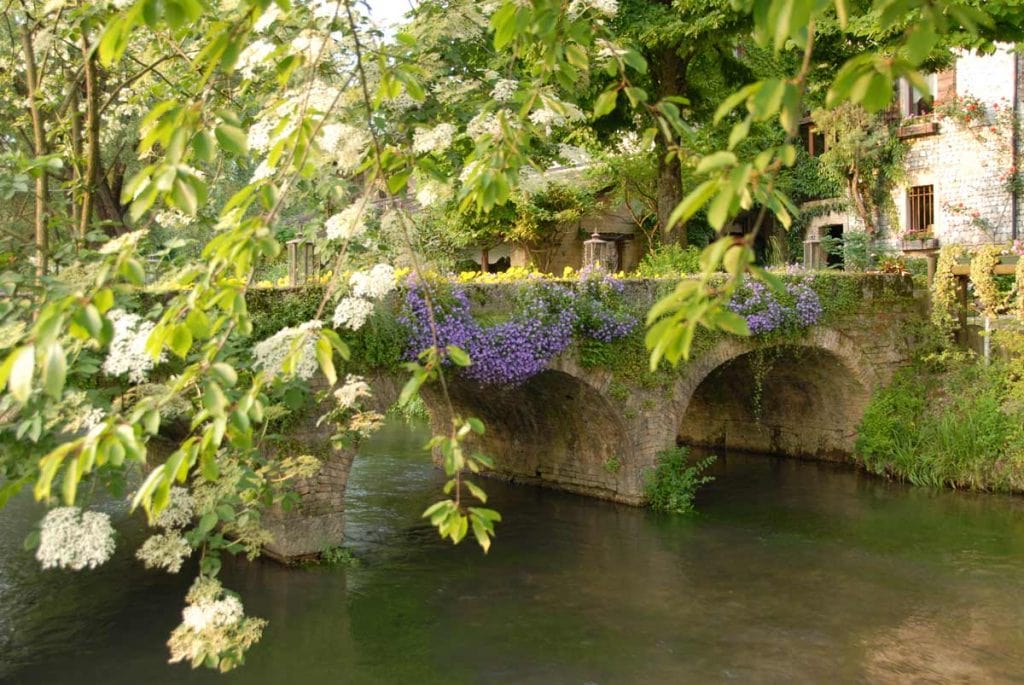
L’Ultimo Mulino
Fiume Veneto (PN)
Discovering Friuli from a mill turned hotel and restaurant. That was the dream of the Balestrieri family, who bought a 17th-century building in Bannia di Fiume Veneto, province of Pordenone: “Back in the 1980s – says Corinna Balestrieri – we were interested in slow tourism and wanted a place equidistant from the sea, mountains, and cities of art. That’s how L’Ultimo Mulino was born.” This charming relais has eight rooms and a restaurant serving traditional cuisine – cjarsons (stuffed Friulian pasta) and tagliatelle with courtyard ragù – accessible via a stone bridge, as the structure stands on an islet washed by the river Sile, which still powers three ancient wheels.
Mulino al Pizzon
Fratta Polesine (RO)
Forty years dedicated to the community around a mill. This is the story of visionary entrepreneurs Giuseppe Marangoni and Donatella Girotto, in love with the Po Delta Park and the Mulino al Pizzon in Fratta Polesine, built where the Scortico – a tributary of the Adige – meets the Canalbianco – a tributary of the Po. The mill has been converted into an eco-museum and remains a lively hub: “Guests can sleep in one of six rooms in what was once the miller’s house – says Donatella – and dine in our restaurant. In essence, we’re building the present and future of this territory. We’ve launched a shipyard for repairing river boats, a docking point for boats and canoes on the Scortico, and a berth for cruise vessels on the Canalbianco, along the Mantua-Venice waterway.”
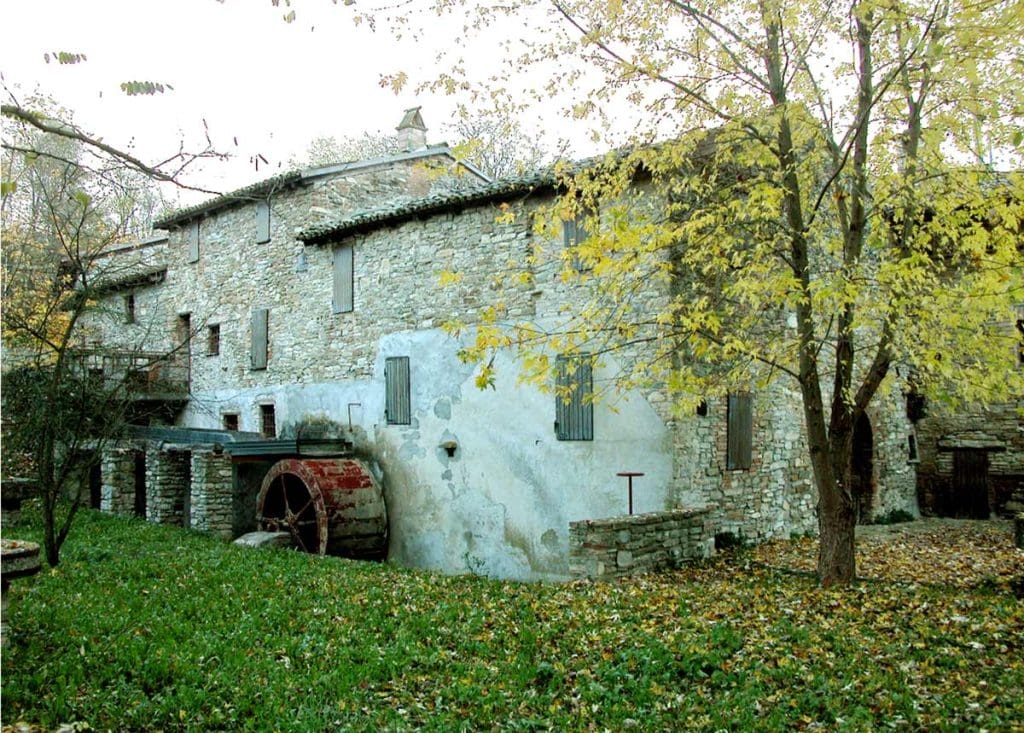
Mulino Borgo Lentino
Nibbiano (PC)
The Tidone stream also flows into the Po and gives its name to the surrounding valley. Here in the Piacenza region lies the Mulino del Lentino in Nibbiano: “It’s one of the rare examples of a fortified mill – explains owner Stefano Borghi – used for collecting tolls and warning of incoming enemies. We have five apartments managed by my daughter Sara. Our guests are mainly walkers, as the village sits at a crossroads of historic routes, from the Via Francigena to the Via degli Abati, the Via dei Celti to the Via del Mare, linking the Po Valley with the Ligurian Sea.”
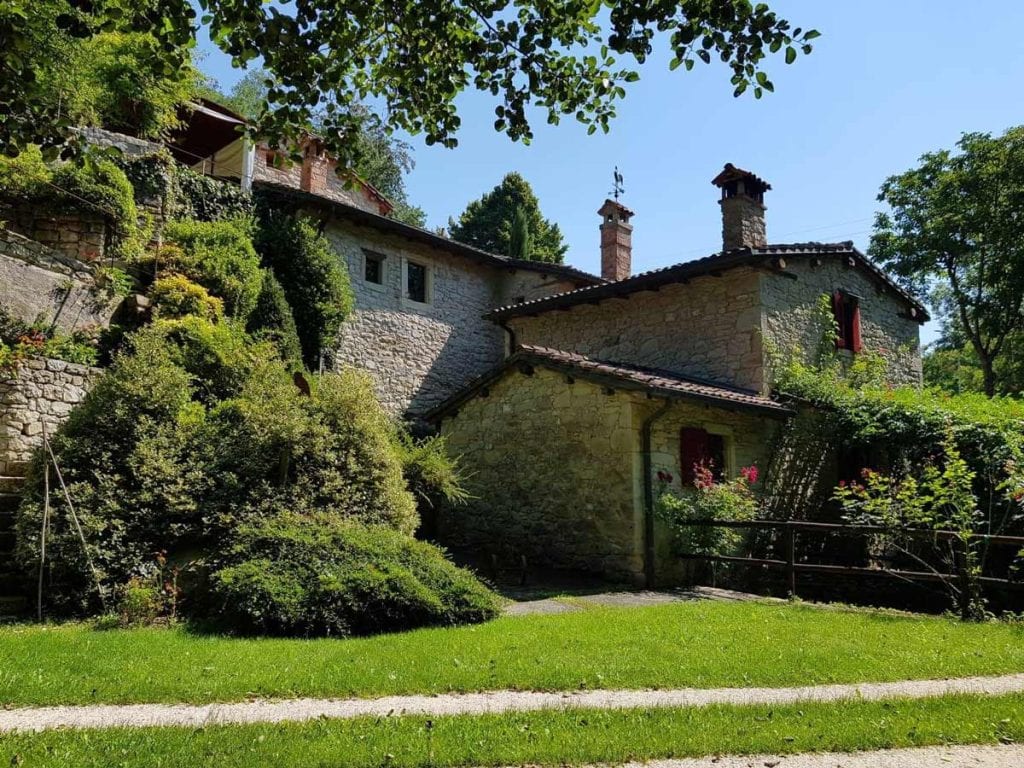
Il Molino di Rocca Pitigliana
Gaggio Montano (BO)
In the Bolognese Apennines, Eugenia Pesci and Armando Ballotta chose a mill as their home and restored two adjoining apartments into B&Bs to share the beauty of a place they love. We’re in Rocca Pitigliana, and the mill takes its name from the hamlet. Still fed by the waters of the Marano stream, the structure dates to the mid-16th century. The unifying element of the landscape is water: “You hear the stream flowing – says Eugenia – the swimming pool was carved from the water reservoir that once powered the millstones, and the stone washhouse has become a grotto.”

Il Mulino dei Renzetti
San Giustino (PG)
Nine uninterrupted centuries of flour. Since the Middle Ages, the Mulino dei Renzetti in San Giustino, province of Perugia, has never stopped operating and now also offers hospitality with three apartments on the upper floor: “It’s a continuity linked to the human factor – explains Stefano Piergentili, the latest in a line of millers – We produce wholegrain flours and also select seeds from the Valtiberina region. We have a shop selling pasta and run courses on how to make bread and pizza.”
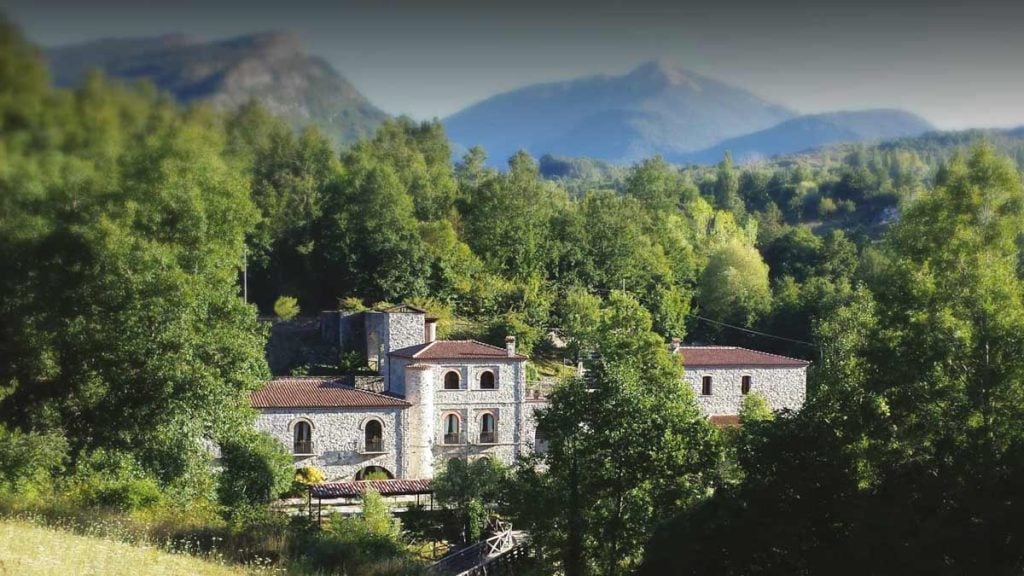
Mulino Iannarelli
San Severino Lucano (PZ)
Situated at the confluence of the Salice and Frido rivers, Mulino Iannarelli lies in the heart of the Pollino National Park, on the Lucanian side. Once owned by a prince, then a military officer, it’s now a stone-and-wood hotel and restaurant with eight rooms and a cuisine rooted in local traditions – lamb, cheeses, and Carosella wheat flours: “Our guests – says owner Daniele Conte – either seek relaxation or enjoy the park’s adventure activities, from the forest rope park in Magnano woods to river-trekking along the Frido. It’s worth coming here just to see the ancient pini loricati, symbols of the park and part of Unesco’s natural heritage.”
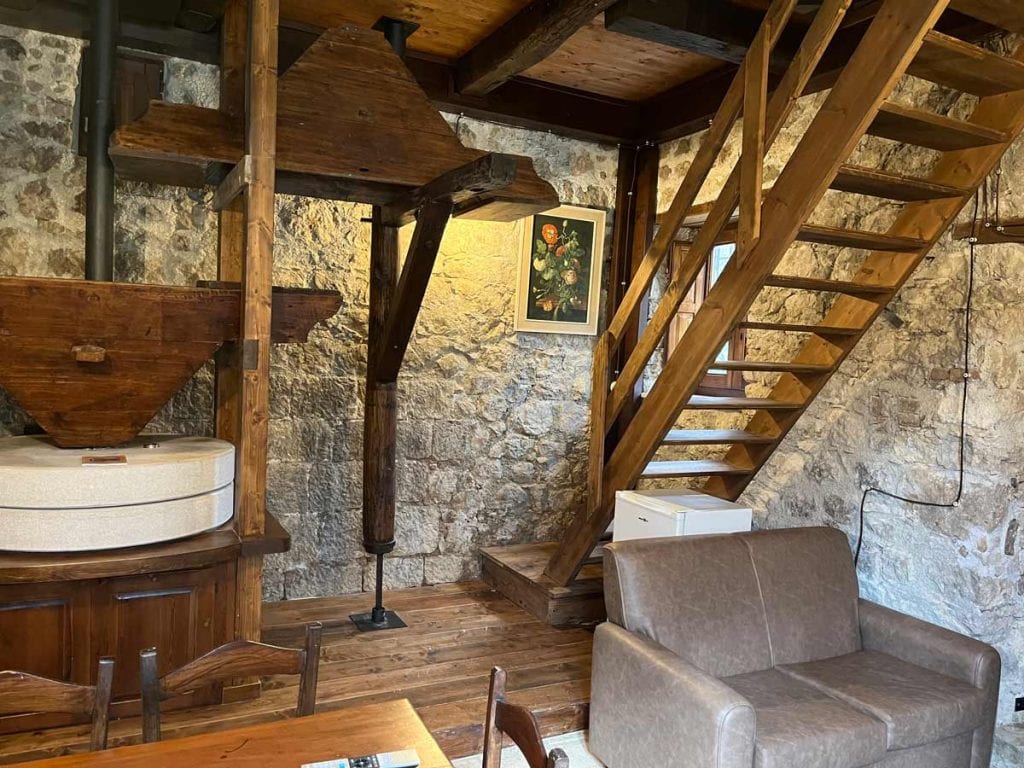
Molino De Maffutiis
Auletta (SA)
A peaceful evening by the fireplace is what Gerardo De Maffutiis promises at his 17th-century mill in Auletta, a small village beside the Tanagro river. We’re in another national park: Cilento, Vallo di Diano e Alburni. The single B&B apartment has preserved its stone mill in the hearth room. Peace reigns here, but there’s much to explore nearby: “The Certosa di Padula is just 40 kilometres away – says Gerardo – the Pertosa Caves are less than ten minutes’ drive, and if you prefer the sea, you can head to Paestum for a swim and a visit to the archaeological site.”
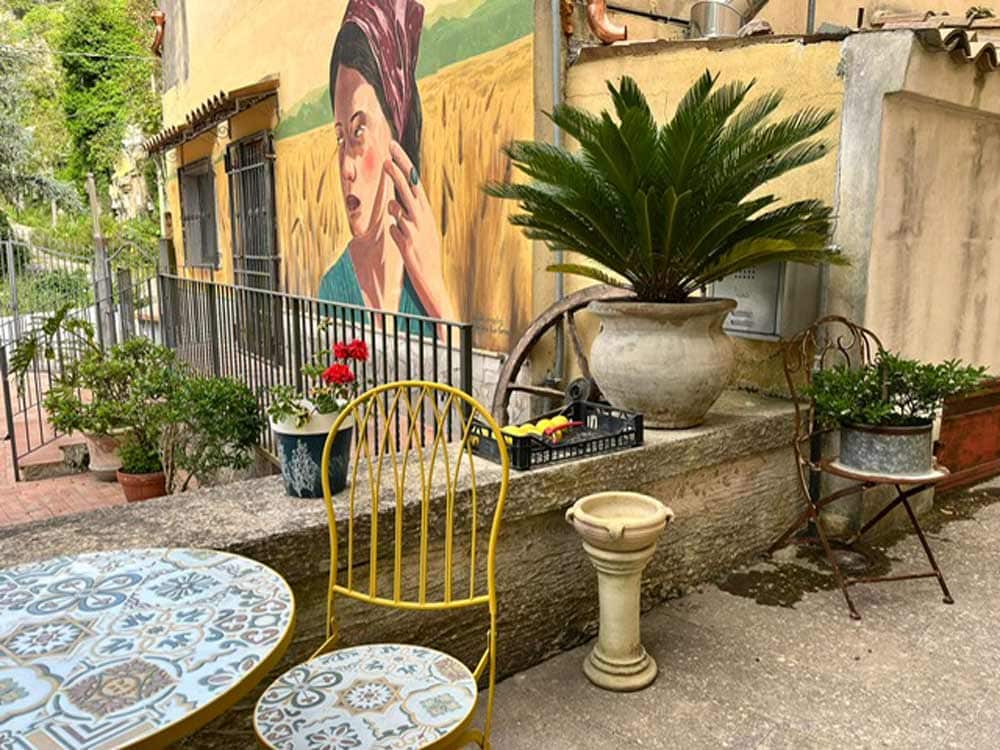
Mulino della Timpa
Ragusa
The Ragusan plateau in Sicily is marked by deep canyons where water has never been lacking – even in dry years – so it’s no surprise to find a valley of mills here too. There were nine along the Santa Domenica stream; Mulino della Timpa was the first to be restored privately. Today, it is part of a farm producing flour and extra virgin olive oil. A few weeks ago, the first B&B apartment opened, with a second expected by year-end. After a long restoration, owner Annalisa Di Benedetto tried to restart milling, but the need to recoup the investment led her towards tourism: “We brought Sicilian crafts and traditions to the estate with live experiences: cart-painters teach decoration, there’s a tarantella dance troupe, a cheesemaker preparing ricotta, and women weaving baskets. We also have a cooking class room where we use our flour. We still produce about 40kg per day, two or three days per month, for our internal use.”

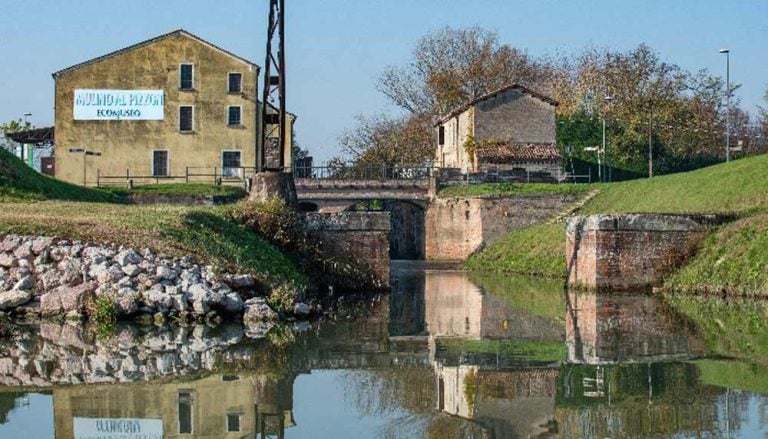
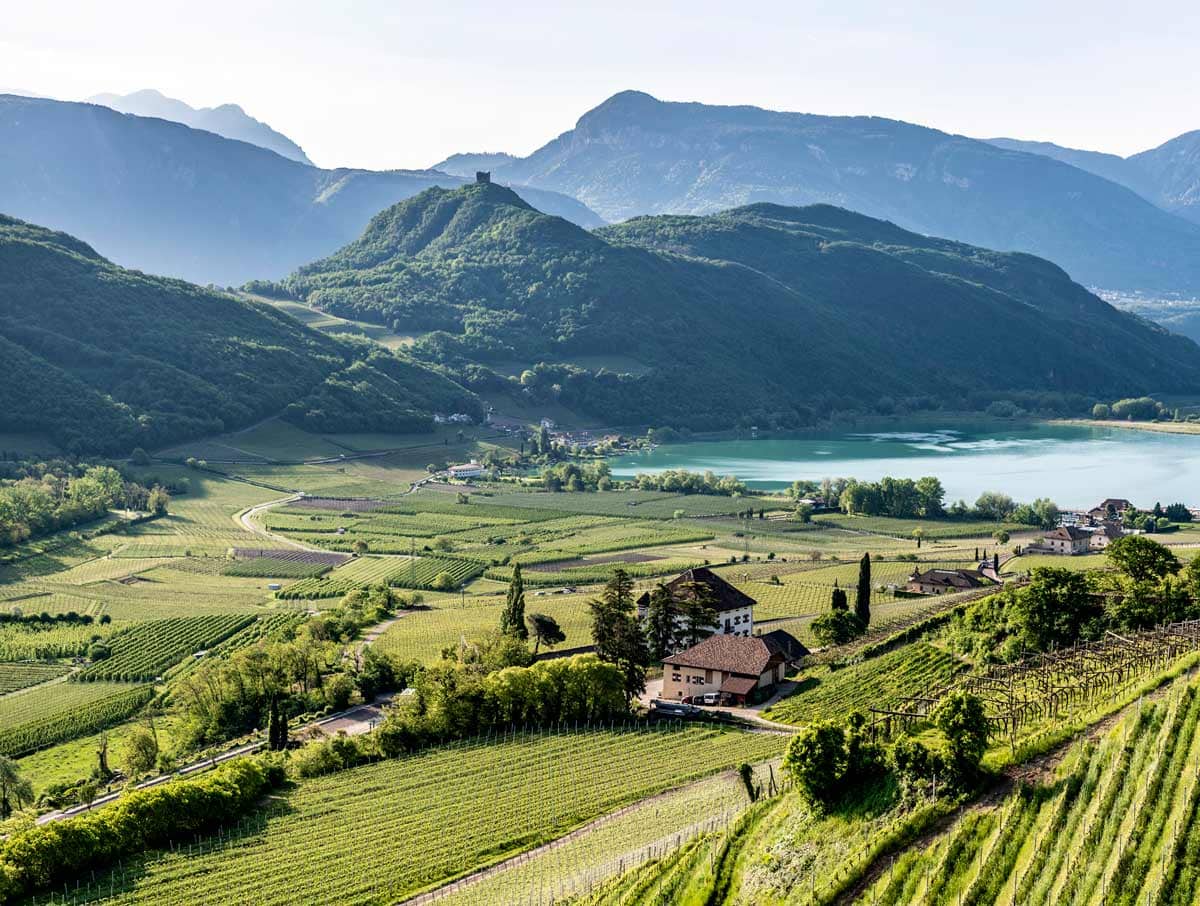 A new life for Schiava: a brief history of the rediscovery of the traditional south Tyrolean wine
A new life for Schiava: a brief history of the rediscovery of the traditional south Tyrolean wine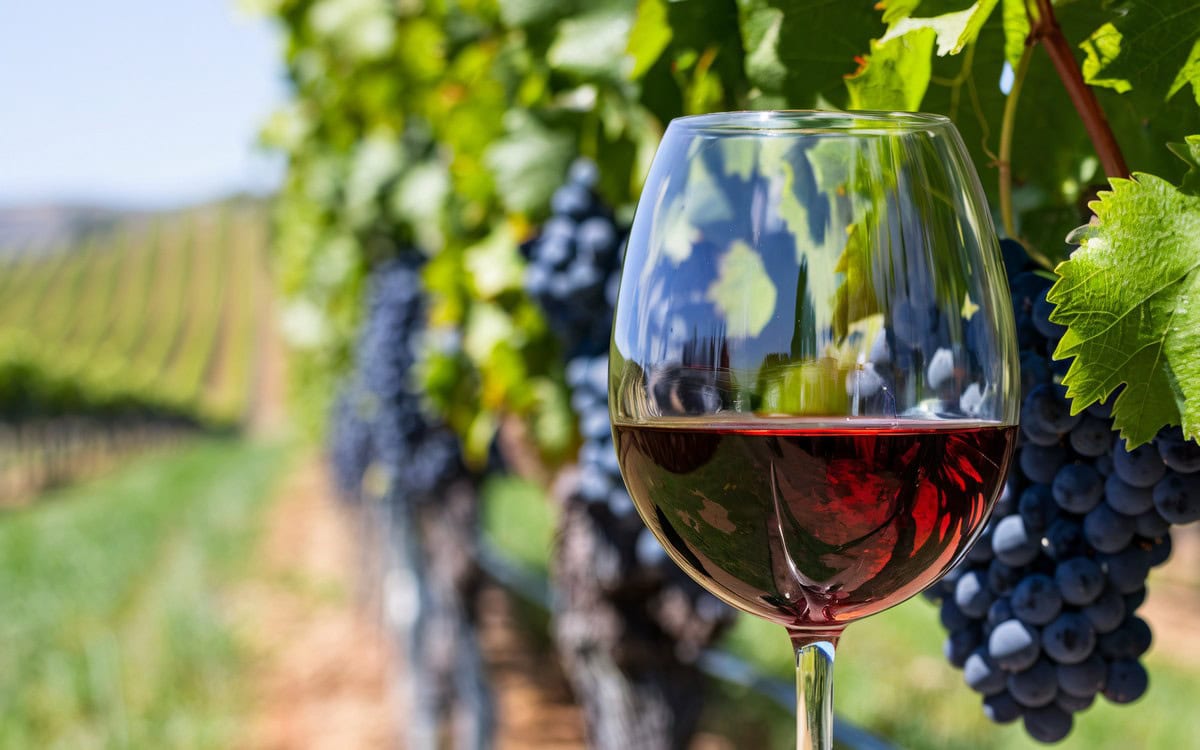 On the Colline Novaresi hills a fine wine from a small denomination is produced. Here are the best labels
On the Colline Novaresi hills a fine wine from a small denomination is produced. Here are the best labels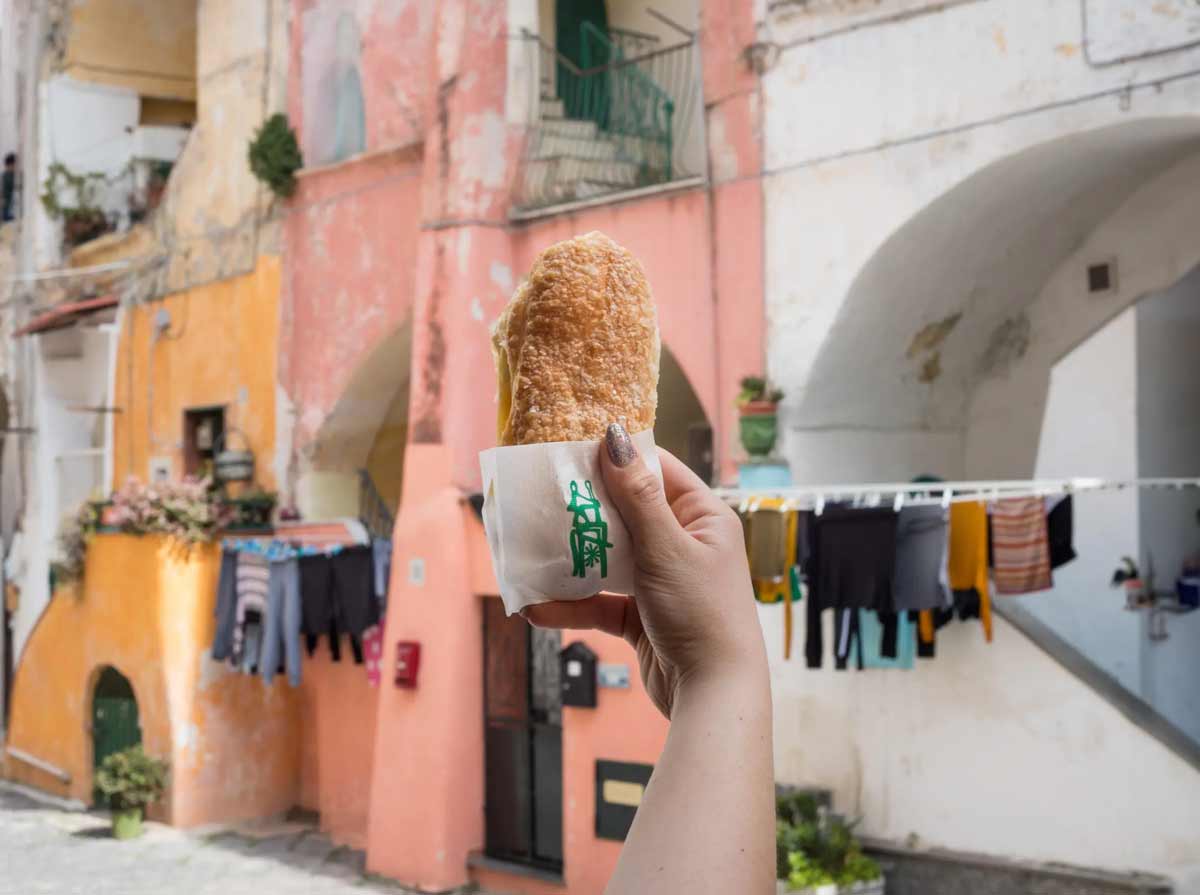 Lingua di Procida, the lemon-based sweet made only on the smallest island in the Gulf of Naples
Lingua di Procida, the lemon-based sweet made only on the smallest island in the Gulf of Naples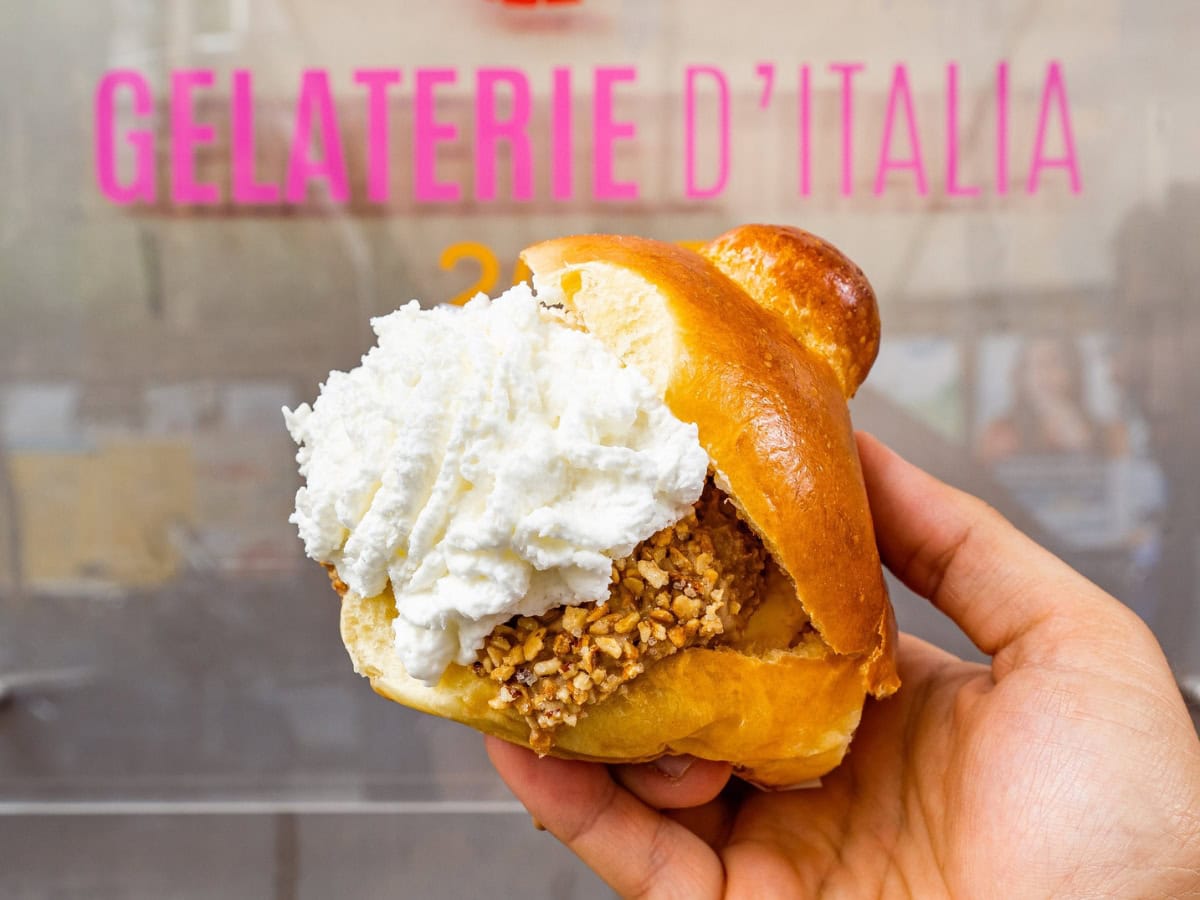 The best gelaterias in Naples, Capri, Ischia, and Sorrento
The best gelaterias in Naples, Capri, Ischia, and Sorrento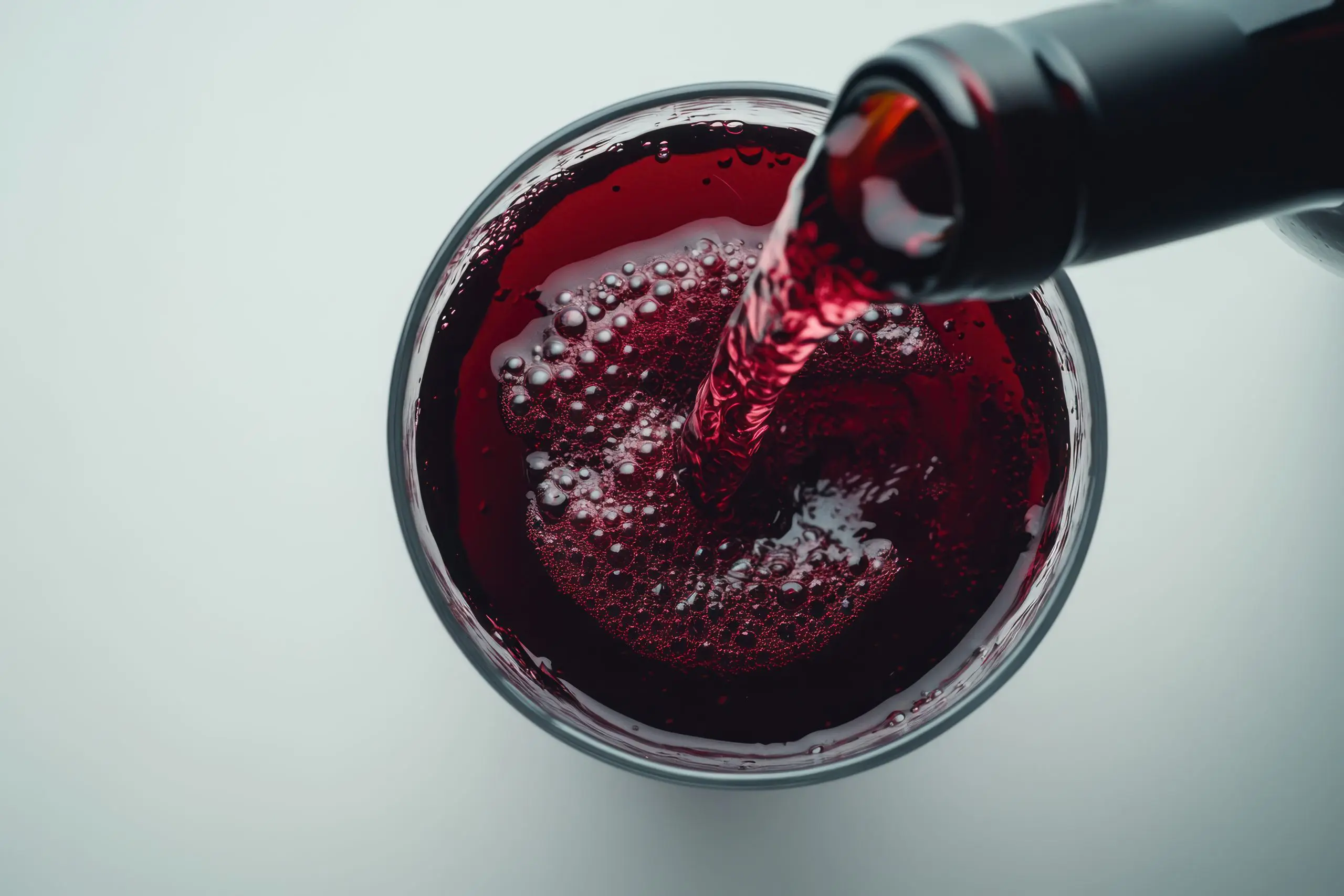 In 8 labels, the new life of Caldaro’s Schiava: our tastings
In 8 labels, the new life of Caldaro’s Schiava: our tastings